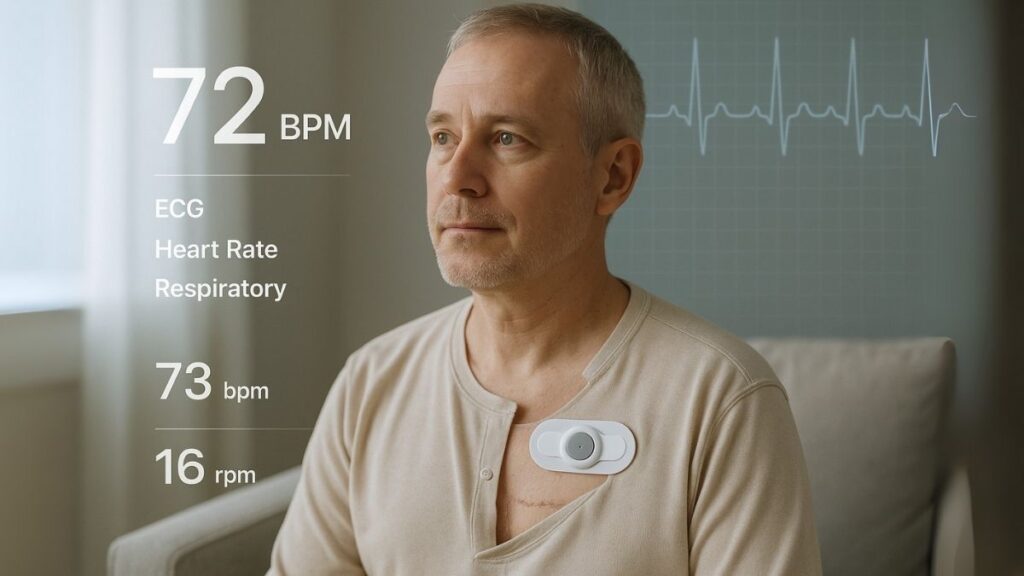technology_in_medicine
Wearable ECG Tech Spots Post-Surgery Heart Risks: Vivalink & Brigham Study Paves The Way For Safer Recoveries
Discover how wearable ECG devices like Vivalink help detect post-surgery AFib risks early—improving recovery and reducing hospital readmissions.
By Dr. Raj K | Published on July 15, 2025

In a promising leap for post-operative cardiac care, a collaborative study by Vivalink and Brigham and Women’s Hospital has spotlighted the critical role of wearable ECG technology in detecting atrial fibrillation (AFib) risks in patients after discharge.
🔍 The Problem: Hidden Heart Risks After Surgery
The challenge? Traditional post-surgical follow-ups miss the crucial window when these irregular rhythms can silently develop.
The research underlines the need for continuous monitoring to catch potential AFib complications early on. Such technology could revolutionize how healthcare providers track cardiac health post-operation. By enabling real-time detection of AFib, patients could receive timely interventions, reducing the risk of adverse events. Implementing wearable ECG devices in routine care could signify a significant advancement in post-operative cardiac management.
💡 The Breakthrough: Continuous Remote ECG Monitoring
Vivalink, a Silicon Valley–based digital health innovator, joined forces with Brigham and Women’s Hospital to trial its wearable ECG patch technology. Their lightweight, skin-friendly device continuously monitors cardiac activity—wirelessly transmitting data to healthcare providers in real time.
Key outcomes of the study:
- Early detection of AFib and other arrhythmias in a significant subset of patients.
- 24/7 monitoring reduced diagnostic delays by up to 48 hours.
- Faster interventions (e.g., anticoagulation or beta-blockers) directly improved patient outcomes.
“Remote ECG monitoring offers a game-changing extension of hospital-grade care into the patient’s home,” said a Brigham cardiologist involved in the trial. “This isn’t just monitoring—it’s prevention.”
📲 How It Works
The wearable system includes:
- A multi-day ECG patch applied post-surgery.
- Cloud-based AI algorithms to detect abnormalities like premature atrial contractions, skipped beats, or rhythm irregularities.
- Clinician access via secure mobile dashboards for alerts, data review, and patient follow-up.
Patients can carry on with recovery at home while clinicians gain a real-time window into their heart’s behavior—no wires, no clinic visits.
🏥 The Bigger Picture: Reinventing Post-Op Care
This research feeds into a growing wave of hospital-at-home innovation, especially in cardiology. With hospital beds under pressure, remote monitoring systems are emerging as critical tools to:
- Prevent readmissions
- Lower costs
- Improve patient satisfaction
According to the American Heart Association, remote ECG monitoring could reduce AFib-related rehospitalizations by over 30% if adopted at scale.
🔮 What’s Next for ECG Wearables?
Vivalink’s success echoes broader momentum in the space. Competing firms like iRhythm and AliveCor are also pushing the boundaries of ECG wearables with AI interpretation, tele-cardiology integration, and even smartphone-based ECGs.
Expect rapid development in:
- CME-accredited training programs for using remote ECG tools
- Insurance coverage for post-op wearable tech
- Broader use cases beyond surgery: heart failure, COVID-19 recovery, and hypertension
❤️ Final Word from ECGKid
Wearable ECGs are no longer just fitness gadgets—they’re now critical tools saving lives after surgery. As tech meets care, patients and providers alike can rest easier, knowing heart health doesn’t go unmonitored when the hospital stay ends.
📰 Source Credits:
- Yahoo Finance: Vivalink Breakthroughs
- Cardiac Vascular News Coverage
- Heart.org: Arrhythmia Innovations